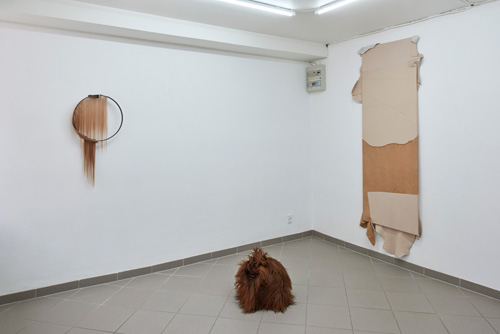
Solo show Vibrant at M100, view front room
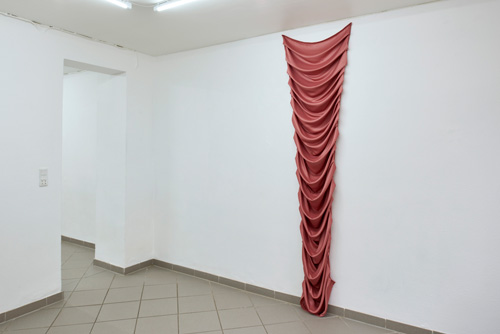
Fabric Objects 2019 225x60x12 cm. satin
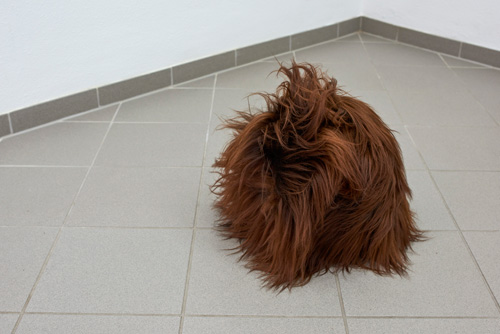
Hair Object #2 2019 40 Ø lambskin
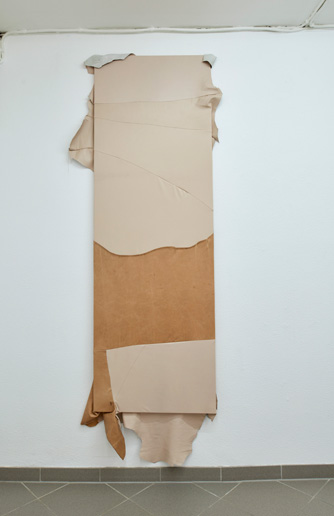
Adaptation #3 2019 200x70x5 cm leather and wood
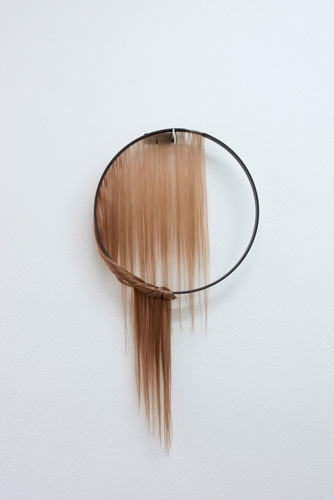
Circle of Control 2019 70x38x4 cm iron and hairextension

View back room
![]()
From left Membrane 2019 silicone, silk and iron
227x40 x4 cm
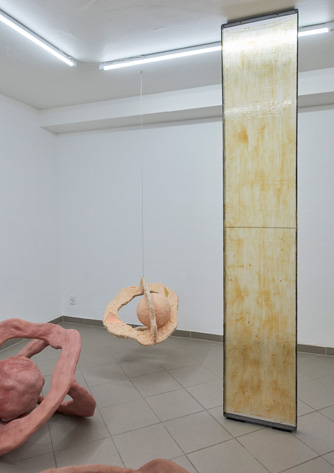
Membrane 2019 silk, latex and iron, 227x40x4 cm
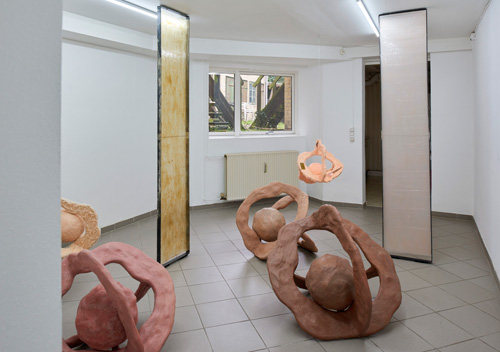
View in the back room
![]()
Cell Object (silicone) 2019 Approx 55 Ø, silicone, wood, polystyrene, brass and copper.
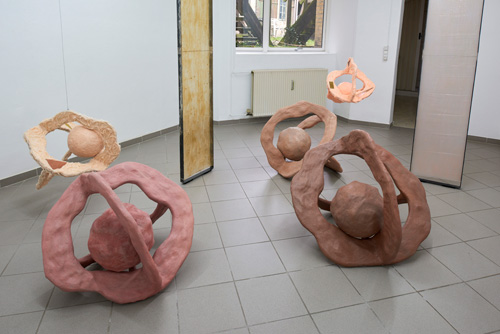
Standing sculpture, Cell Objects 2019 concrete and wood, brown 80 Ø, pink 72 Ø, tan 75 Ø
![]()
Cell Object (silicone) 2019 Approx 55 Ø, silicone, wood, polystyrene, brass and copper.
Vibrant
M100 Odense, Denmark
The body as a vibrant eco-system in a changing world
Text by Mette Kjærgaard Præst
Louise Sparre’s solo exhibition Vibrant is like a journey into the body. It begins with works that refer to the body’s surface, such as Adaption and Fabric Object, which respectively relate to the skin and the vagina as border areas between outer world and inner body. Alongside these we see Circle of Control – an iron ring with long blonde hair extensions – its title referencing a self-help and coaching concept that encourages a person to focus on things that they apparently have control over (e.g. life choices and attitude) instead of things outside of their control (e.g. genome and place of birth). From here, Sparre dives deeper into the body, through the skin and all the way to the microscopic level, where she focuses on the smallest units of the body: the cells. In reference to the diversity of cells in the body, Sparre’s magnified Cell Objects are produced from different natural and artificial materials such as concrete and silicone, and therefore take on different physicalities; soft, hard, smooth, rough.
The human body is made up of many trillion cells – some are human cells, while more than half is bacteria, thus other. Cells, bacteria, viruses, and fungi each play a relatively simple role in the complex system that is our organism, and, effectively, the sum of all these parts enables the human body to function and act. Furthermore, new research indicates that our bacterial content (specifically our gut flora or microbiota) besides facilitating our digestion, influences cognitive functions such as memory, learning, decision making processes, as well as our mood and state of mind, and therefore effects our personality, emotions, wellbeing and mental health.
As humans, therefore, we are not sublime autonomous organisms, separated from nature and with full control over our own emotions and actions. Instead we are an ordered jumble of other living organisms – a super-organism, an eco-system, or perhaps even a colony – consisting of trillions of others. For feminist scholar and activist Donna Haraway this poses an opportunity to re-consider our self-perception in relation to other species (animals, plants, bacteria). She proposes a necessary turn away from autopoietic thinking, which otherwise has influenced the western worldview; the idea that humans can exist, make and survive autonomously. Instead, Haraway suggests that we turn towards sympoietic thinking – tentacular thinking, acting and working together with each other and with other species. We must therefore understand ourselves as dynamic organisms, part of our surroundings, and in constant flux.
Louise Sparre's journey into the innermost part of the body is at the same time a journey towards a vibrant, changing worldview
supported by
